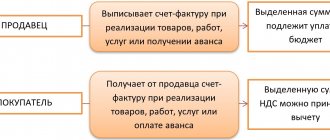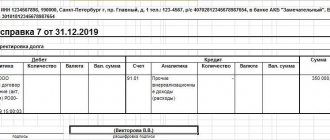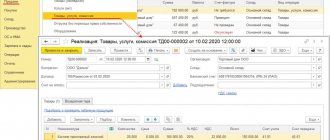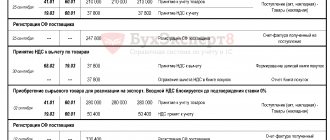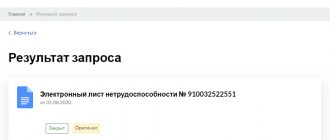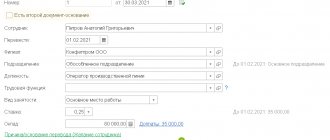RKO: in Excel
You can also use RKO in excel. It contains the same columns as in the word document - choose the one that is convenient for you.
Get the form for free!
Register in the online document printing service MoySklad, where you can: completely free of charge:
- Download the form you are interested in in Excel or Word format
- Fill out and print the document online (this is very convenient)
RKO is issued in one copy. It is issued by the employee who issues the money, but the recipient also enters some information. How to fill out RKO - read on.
The cash disbursement order is filled in when you withdraw cash from the cash register:
- to the bank for crediting to the current account,
- on account - upon a written application from the recipient, in which he must indicate the amount and period for which he is taking cash,
- for personal use by an employee, for example, for travel expenses or as financial assistance,
- for the needs of the enterprise - in this case, you must indicate a specific purpose for issuing money, for example, for business expenses.
Example of filling out RKO
RKO can be issued on paper or electronically. It's easy to fill out the form. Download a sample of filling out a cash flow order that is current in 2022 - you can simply replace the data with your own.
RKO
Get a RKO sample for free!
Register in the online document printing service MoySklad, where you can: completely free of charge:
- Download the form or sample you are interested in
- Fill out and print the document online (this is very convenient)
The amount you enter in the KO-2 form should not exceed 100 thousand rubles. Anything that exceeds this limit must be carried out by bank transfer.
Registration of RKO
An expense cash order can be issued by:
- Chief Accountant,
- an accountant or employee (for example, a cashier) appointed by the manager,
- director (in the absence of a chief accountant and accountant).
RKO is always drawn up on the day the money is issued.
Start filling out the RKO by filling out:
- the full name of the company indicating the organizational and legal form,
- OKPO code,
- form numbers in accordance with internal document flow,
- dates of completion,
- code of the structural unit that issues money. If it is not there, put a dash,
- number of the subaccount in which cash is accounted for,
- analytical accounting code (if required),
- loan (i.e. account number that reflects the disbursement of funds),
- amounts in rubles (in numbers).
Next, the procedure for filling out the RKO is as follows:
- you need to enter the full name of the person you are giving the money to,
- indicate the basis for issuance, for example: salary, financial assistance, business trip expenses, etc.,
- indicate the amount in words,
- enter the name, date and number of the attached document on the basis of which you are issuing money. This could be a payroll, receipt, order, contract, etc.
The cash receipt order must contain the signatures of the director or authorized employee, as well as the accountant. They definitely need to be decrypted.
The next part is filled out by the employee who receives the money. He points out:
- The amount issued is in words, and kopecks are in numbers. The remaining blank part of the line must be filled with a dash.
- Date of receipt of money.
- Passport details.
Signatures are placed by the cashier who issued the money and the employee who received it. Without filling out this part, the RKO will be invalid. In this case, the money will be considered appropriated by the employee who issued it.
The cashier can draw up one cash register at the end of the working day for the entire amount issued during the day, but provided that there are fiscal documents of the online cash register - checks or BSO.
Corrections in the cash receipt order are not allowed.
To avoid mistakes, use the MySklad service - you can fill out online and print a cash receipt order in a few clicks.
Numbering in branches and separate divisions
As in the case of an organization without divisions, there is no strict regulation here. PKO and RKO are numbered, guided by considerations of convenience and completeness of reflection of cash accounting data. Typically, each separate division is assigned a prefix: letters or numbers, its encoding. The cash order number will contain a prefix, it is entered through a horizontal line or a fraction line.
This numbering is needed, for example, if separate divisions independently record revenue and then send the data to the head office. If at the same time there is a need to keep records by type of income, this information can be encoded in the PKO number.
The cash order number can thus consist of three parts, separated by a hyphen or fraction:
- division (branch) coding;
- income coding;
- PKO number,
If the division by type of income is not relevant for an organization in accounting, it can be excluded.
Note that with all the obvious difficulties of continuous numbering of cash orders, when an organization has branches or separate divisions, it is advisable to be guided by this principle. Identification of branches (divisions) should be based on the use of additional information in the structure of the PKO and RKO numbers (as shown above), and not on parallel numbering of cash documents.
The numbering order of PKOs and RKOs must be reflected in the local regulations of the business entity. Divisions and branches should be given special attention in LA, taking into account their territorial distance from the head office.
Currently, the procedure for conducting cash transactions by legal entities (individual entrepreneurs) is carried out in accordance with the requirements of the Bank of Russia Directives dated March 11, 2014 No. 3210-U “On the procedure for conducting cash transactions by legal entities and the simplified procedure for conducting cash transactions by individual entrepreneurs and small businesses” (hereinafter referred to as Instructions No. 3210-U).
The Ministry of Finance of Russia in Information dated December 4, 2012 No. PZ-10/2012 explains: “ From January 1, 2013, the forms of primary accounting documents contained in albums of unified forms of primary accounting documentation are not mandatory for use. At the same time, forms of documents used as primary accounting documents established by authorized bodies in accordance with and on the basis of other federal laws (for example, cash documents) continue to be mandatory for use.
».
The form of the incoming cash order (form No. KO-1) and the form of the outgoing cash order (form No. KO-2) are approved by Resolution of the State Statistics Committee of Russia dated 08.18.1998 No. 88 (hereinafter referred to as Resolution No. 88). These documents relate to the primary accounting documentation for cash transactions.
In accordance with the Instructions for the use and completion of forms of primary accounting documentation for recording cash transactions, approved. Decree No. 88:
- Receipt cash order (Form No. KO-1) - is used to register the receipt of cash at the organization's cash desk both in the conditions of manual data processing methods and when processing information using computer technology. The cash receipt order is issued in one copy by an accounting employee and signed by the chief accountant or a person authorized to do so.
- Expenditure cash order (Form No. KO-2) - is used to process the issuance of cash from the organization’s cash desk both in the context of traditional data processing methods and when processing information using computer technology. It is written out in one copy by an accounting employee, signed by the head of the organization and the chief accountant or a person authorized to do so, and registered in the logbook for registering incoming and outgoing cash documents.
There are two points to pay attention to:
- Resolution No. 88 does not regulate the requirements for the numbering of incoming cash orders (form No. KO-1) and outgoing cash orders (form No. KO-2).
- Instructions No. 3210-U also do not contain requirements for continuous, continuous or uniform numbering of incoming and outgoing cash documents.
The legislation of the Russian Federation currently in force does not provide for special liability for violation of the numbering of incoming and outgoing cash documents (provided that this does not affect the timely receipt of cash to the cash desk and its release from the cash register).
Read more about checking compliance with cash register discipline in the “Legal support” section in IS 1C:ITS.
One of the mandatory documents for any company that handles cash is a cash book. It does not matter whether the enterprise is state-owned or private, or what taxation system the owner has chosen. The book must be correctly compiled, systematically filled out, and not contain any erasures. The cashier, accountant of the enterprise or owner is responsible for maintaining this documentation.
RKO: fill out online
You just need to enter the amount and basis of payment, select the expense item and recipient, and the system will automatically generate and number the document.
Fill out RKO online
Fill out the RKO online!
Register in the MoySklad online service - you will be able to: completely free of charge:
- Fill out and print the document online (this is very convenient)
- Download the required form in Excel or Word
In MyWarehouse you can also download a complete list of expenditure orders for all time. This is convenient for reporting - the total amount of funds issued is immediately visible.
More than 1,000,000 companies already print invoices, invoices and other documents in the MyWarehouse service Start using
Video: Maintaining a cash book using the 1C program
Find out how to correctly create and fill out a book using the 1C program, and avoid mistakes when filling it out and entering data into it. The video tutorial shows the main stages of not only filling out, but also creating a book, and provides explanations on working with the program and the basics of maintaining documentation.
The cash book is one of the most important financial documents in any organization working with cash flow. The cashier, as well as the chief accountant, are responsible for the availability of this documentation and the correctness of its execution. The absence of a cash book or its incorrect maintenance leads to a fine.
How to fill out RKO: difficult cases
Although filling out the RKO is not difficult, in special cases problems arise. We've sorted out the most common ones.
Payment to the supplier through the cash register: how to issue cash settlement
Be sure to request a power of attorney from the supplier’s representative to receive from your company a specific amount under a specific agreement, delivery note, etc. It must be attached to the RKO. Note that:
- When filling out an expense cash order, in addition to the details of the power of attorney, you must indicate the full name of the representative and his passport details.
A power of attorney to receive money without it being signed by a RKO representative does not prove that he received it.
- In the “Bases” line, you must enter the details of the contract, invoice, etc., as well as the names of the goods.
- If payment is made under several contracts at once, it is better to draw up a separate order for payment for each of them. It will be clearly visible how much was paid for each delivery.
- When recording this order in the cash book, you need to indicate the full name of the representative, details of the power of attorney and the name of the supplier.
How to fill out cash settlements for the issuance of accountable amounts: sample
Since August 19, 2022, there has been an instruction from the Bank of Russia, according to which money can be issued on account by order of the director. An application from an accountable is no longer required. The main thing is to indicate the chosen issuance procedure (by application or by order) in the company’s accounting policy.
Filling out the cash book
The title page displays the name of the organization or enterprise, full name. entrepreneur and the year for which entries are made in the book. For example: “Sergey Alexandrovich Ivanov, 2016.”
Let's look at the main columns and fields to fill in with examples of entries in each of them.
- Cash for . Contains the date when certain monetary transactions were carried out. For example, 05/12/2016.
- Leaf . Shows the page number. Numbering is set when creating a book. For example, 21.
- Document Number . PKO or RKO account number. For example, PKO No. 24.
- From whom it was received or to whom it was issued. The data of the individual or legal entity who deposits or receives funds and the type of transaction are indicated. For example: “To Ivanov I.I.”, “From Zaika A.K.”, “from LLC “Stroydvor””.
- Corresponding account number, subaccount . Contains the number according to the “Cashier” classifier. Indicates the method of spending or receiving funds. For example, 65. This column cannot be filled out for individual entrepreneurs.
- Parish . Cash received under PKO. For example, 546 rubles. 40 kopecks
- Consumption _ The amount issued to the client under cash settlement. For example, 67 rubles. 67 kopecks
- Total for the day . Contains the result of calculating the total amounts of payments and receipts. For example: 12786 rub. 24 kopecks
- Cash balance at the end of the day . Contains calculation of the cash balance in the cash register. For example: 4567 rub. 34 kopecks The data for this column is calculated using the following formula: Initial amount + income – expense.
When issuing funds from the cash register in the form of various benefits and wages, they are indicated in the cash book as a separate amount. At the end of each page the number of orders (receipts, expenditures) is indicated.
The document is filled out with ink or a ballpoint pen. At the same time, to facilitate the work, the cashier can use carbon paper when filling out the cashier’s report.
